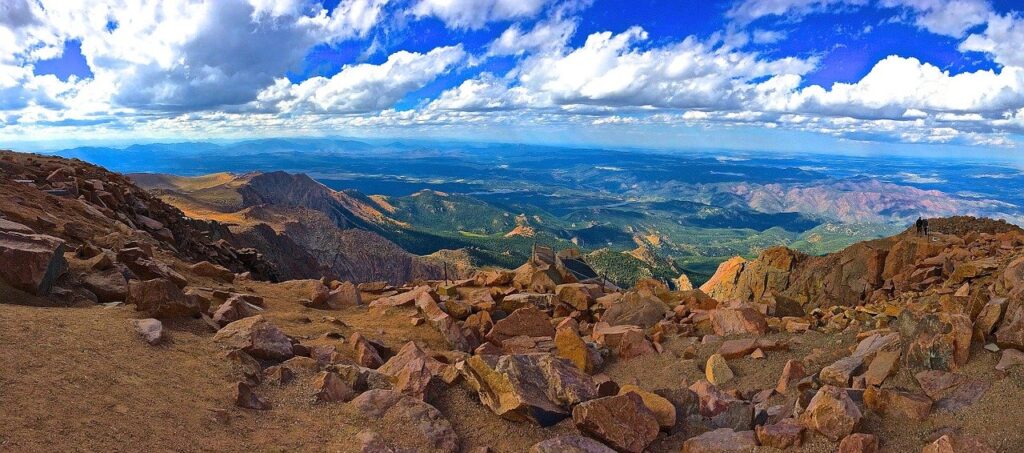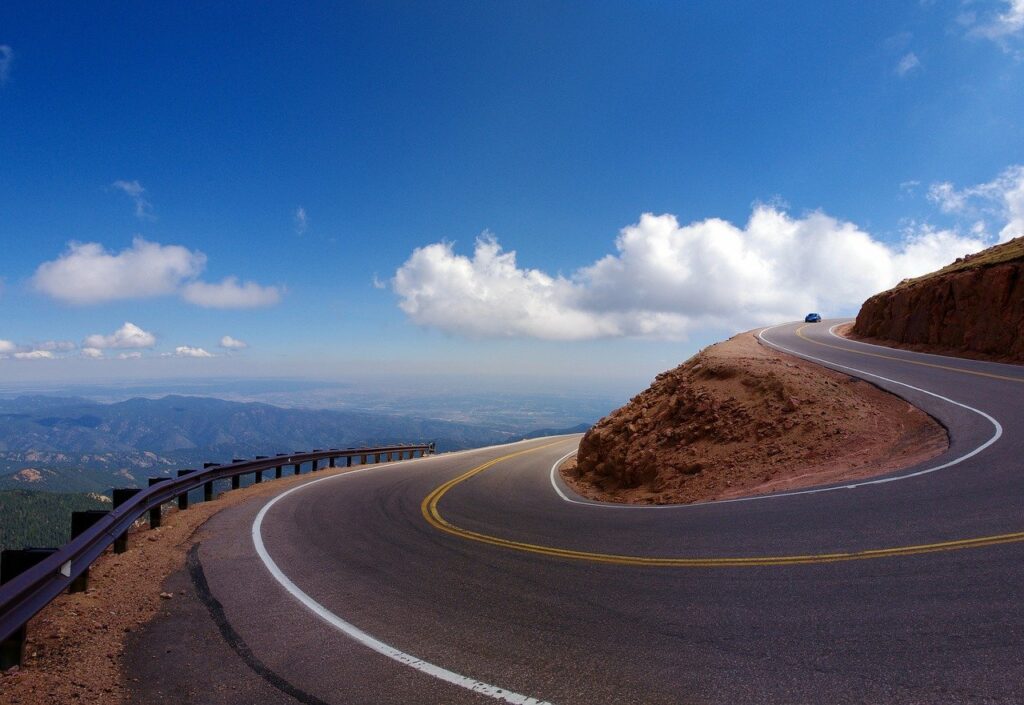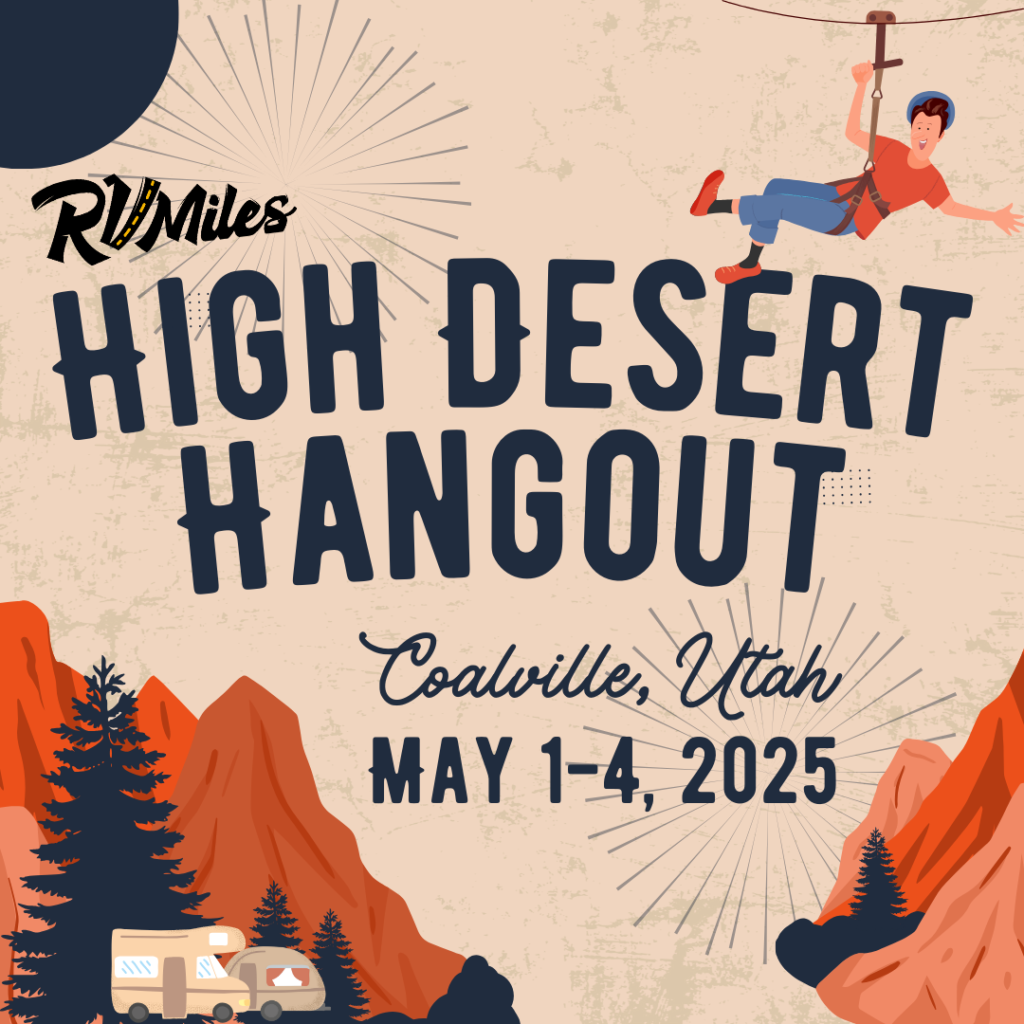By Jason Epperson
Listen Below:
Introduction to Pikes Peak:
As anyone who’s visited Colorado Springs can tell you, it sits in the shadow of an ominous mountain – it’s is an amazing sight to behold. The 14,115-foot summit rises over the plains with a sort of ancient majesty. It predates humanity by millions of years and was here long before anyone first settled the region. For centuries and even millennia, it’s been recognized by people of all cultures as one of the most striking landmarks in Colorado. Everyone has had their own name for it, each trying to capture the beauty and splendor of the peak – Pikes Peak.

The original inhabitants of the area were the Colorado Mountain Ute people, who’ve inhabited the Front Range region since time immemorial. They saw that, due to its height, the peak was the first to be illuminated by the dawn; for that reason they named it Tava, meaning “Sun Mountain.”
The peak bore that name for hundreds of years. Other indigenous groups had their own names for it as well. When they arrived in the early 1800s, the Arapaho people named it what translates “the Long Mountain,” due to its wide berth.
In the 1700s Spanish explorers traveled north from the Viceroyalty of New Spain in order to explore the northernmost border of their empire’s New World territory. They were the first Europeans to see the mountain. Early on they borrowed a name for it from the indigenous population and called it Montaña del Sol, the Mountain of the Sun. In time, they gave it their own name: El Capitán, meaning “the Captain” or “the Leader,” emphasizing its nature as the most prominent peak of all the Front Range.
That’s all before explorer Zebulon Pike.
History of Pikes Peak and Zebulon Pike:
In 1806, American explorer Zebulon Pike traveled to Colorado as part of his expedition into the newly purchased Louisiana Territory, having been sent out by President Jefferson, along with many other explorers. He set sights on the peak soon after entering the Colorado area and quickly tried (and failed) to climb it. In his journal entries, he called the mountain both “the Grand Peak” and simply “Highest Peak.”
The latter name became popular with Anglo-American explorers, trappers, and settlers. Many of them began to refer to it as “Pike’s Highest Peak.”
The mountain was first called “Pike’s Peak” by newspapers during Colorado’s gold rush of 1859. They likely did this to save on space—shortening names was a common thing in newspapers at the time.
The name grew popular among the “fifty-niners” making their way west, and the phrase “Pike’s Peak or Bust!” became a popular slogan of the era. To the fifty-niners, the mountain represented hope and survival, and thanks to its great height it was the first thing many of them saw when they finally entered the Colorado Territory, signifying the end of a long and dangerous journey.
“Pike’s Peak” was the name that stuck, and it was finally adopted as the official name (minus the apostrophe, according to the custom of the Board on Geographic Names) by the federal government in 1890. The mountain has been Pikes Peak ever since.
But Zebulon Pike described the summit of his namesake peak unattainable. It was a Botanist, Geologist and Abolitionist named Edwin James who many thought should have had the peak named after him.
Besides being known for creating relationships with Native Americans in the United States and aiding African Americans in escaping slavery, James was the first to summit Pikes Peak.
James was a member of the 1819 expedition led by Major Stephen Harriman Long into the Louisiana Purchase territory. It was the first real scientific survey of the region and dramatically increased the country’s geographical knowledge of the West. James was responsible for producing the report of the venture.
During the second year of the Long Expedition, the company left the winter camp near the eastern border of what is now Nebraska. They headed west toward the Rockies, following the Platte River, then south along the Rocky Mountain front. On July 13, James and two others set out to climb Pikes Peak. He wrote:
“On the morning of the 14th . . . we continued the ascent, hoping to be able to reach the summit of the Peak, and return to the same camp in the evening. . . . A little above the point where the timber disappears entirely, commences a region of astonishing beauty . . . covered with a carpet of low but brilliantly flowering alpine plants. . . . We now found it would be impossible to reach the summit of the mountain, and return to our camp of the preceding night, during that part of the day which remained; but as we could not persuade ourselves to turn back, after having so nearly accomplished the ascent, we resolved to take our chance of spending the night, on whatever part of the mountain, it might overtake us. . . . We met, as we proceeded, such numbers of unknown and interesting plants, as to occasion much delay in collecting, and were under the disagreeable necessity of passing by numbers which we saw in situations difficult of access.”
It was the first time in recorded history that a mountain over 14,000 feet been scaled in North America.
A century later, In the early 1900s, the Barr Trail and the Pikes Peak Auto Highway were completed. The area grew in popularity and in 1963, land above 14,115 feet was declared a National Historic Landmark.
Today, Pikes Peak is the most visited mountain in North America. The region attracts 6 million visitors each year, with nearly 700,000 visiting the Peak itself.

Visiting Pikes Peak:
In order to visit Pikes Peak today, you can go about it in one of three ways: You can climb to the summit along the still popular Barr trail, a thirteen-mile trek that begins in the town of Manitou Springs. You can even stay overnight halfway up with a full breakfast and dinner at the Barr Camp.
One of the most unique experiences in the world, the Manitou & Pikes Peak Cog Railway gets you to see the summit via a very steep railroad. It was founded in 1889 when it became the highest rack railway in the world. It’s currently closed as it undergoes a 3-year reconstruction. The new experience is set to open in May of 2021.
But the most popular way to get to the summit of Pikes Peak is to drive. The 19.26 mile Pikes Peak Highway begins at 7,400 feet and climbs all the way up to 14,115 feet to the summit of the mountain. The journey involves lots of steep drop-offs and tight curves. No trailers are allowed, and you should be well versed in gearing down your transmission to save your breaks on the steep decline. In fact, there’s a brake check station partway down, where they check the temperature of your brake shoes. If you’re over 300 degrees, you pull over and wait for a half-hour or so.
Right now, the summit is under intense construction. In fact, it’s very hard to get a decent view from the top. Once the new summit house is completed, it should be spectacular. But at the moment, better views can be found at pull-offs below the summit.
The historic summit house is known for its plain donuts and hot chocolate, but honestly, we were entirely underwhelmed. We highly recommend the gift shop and concessions at the brake check, which is the historic Glen Cove Inn at just over 11,000 feet. Views are great and its a better and less crowded alternative.
The drive will cost you $15 per adult and $5 per child, and until the construction at the summit is finished, you may be asked to take a 15-passenger shuttle a few miles before the summit, unless you have a car seat or someone with a disability. Even though Pikes Peak is a part of the Pike National Forest, your federal America the Beautiful pass won’t work, as the highway is operated by the city of Colorado Springs.
Connect and Subscribe:
To learn more about the RV Miles Network, including the RV Miles and America’s National Parks Podcasts, visit RVMiles.com.
You can hear this story and more on the See America Podcast. Available on Apple Podcasts or wherever you listen to podcasts.
Want to chat about great travel destinations all across the US? Join the See America Facebook Group and don’t forget to follow See America on Instagram, Facebook, and YouTube.

See America is sponsored by Roadtrippers. America’s #1 trip planning app. Enjoy 20% off your first year of Roadtrippers PLUS with the code RVMILES2X.







